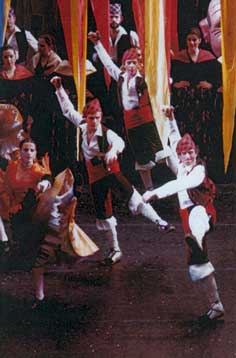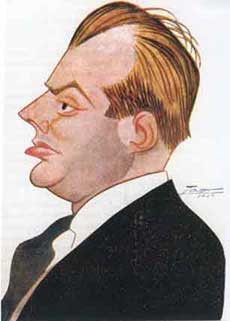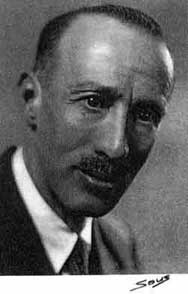 PART
I
PART
I
The first 100 pages cover the history of the genre from its beginnings during the early 17th Century up to 1997. Section One covers Zarzuela Antigua (1657 - 1832); Section Two, the beginnings of Zarzuela Moderna (1832 - 1856); Section Three, the Golden Age of Zarzuela (1856 - 1910) with sub-sections on Zarzuela Grande, the Bufos Madrileños, the Género Chico, the Género Ínfimo and Zarzuela outside of Madrid, more particularly in Catalonia; and, Section Four, the decline of the Género Chico, the re-establishment of Zarzuela Grande, Operetta and the genre in post-Franco Spain. More than a hundred plot outlines and brief synopses are interspersed in the exposition of Part I to illustrate the development and evolution of Spain’s musical theatre.
 PART
II
PART
II
The second part of the Reference is comprised of six sections. The first contains biographical information and catalogue of works of 91 composers of Zarzuela Moderna. Major composers are given a much more extensive treatment and have a more complete catalogue. The catalogues include foreign works that either the composer or his librettist adapted for Spanish audiences and appear as such in the catalogue as well as in the Index of Titles (pp. 629-752). Paralleling section one, section two does the same for 72 librettists. Section three contains the description and premiere details, the synopsis, vocal cast, musical numbers (romanzas) and their distribution throughout the work and a short discography and videography of twenty of the most frequently performed Zarzuelas in Spain today. These twenty synopses expand considerably the briefer outlines contained in the History of the Genre (Part I) segment of the Reference. Section four contains the Discography and Videography. Details of existing discographies available in a number of reference publications are given as well as facsimilies of catalogues of past recordings by Columbia-Alhambra and Montilla Records: the late 1970s Zacosa catalogue of re-issues of approximately 100 of these recordings is also given. In addition, there is the 1997 listing of BMG compact disc recordings of Zarzuela along with the titles of recordings released during the same period by Auvidis Valois. With the electronic media's internet and search machines and the exhaustive listings recently published by the Instituto Complutense de Ciencias Musicales, the information published in this section of the Reference can be expanded and updated with great ease. Also, these additional tools cater well to the the location and acquisition of past and present media recordings. Section five comprises the bibliography of works cited. Section six gives a 1492 - 1997 chronological table which shows the parallel between historical and cultural events in the Western world and the corresponding significant moment in the evolution of Zarzuela - both Antigua and Moderna.
 PART
III
PART
III
Part III has two sections: the Index of Titles and the Index to Part I. The Index of Titles lists 3,347 “Zarzuelas” - Zarzuelas in the broad sense of the term which is meant to include all the works that come under the umbrella “comedia musical española”. The listing includes all the works listed in the Reference as well as major works by lesser known composers and librettists who do not have a separate biographical entry. It represents only 10 per cent of the total number of Zarzuela titles catalogued. Bibliographical information is provided on numerous other indexes: from the four volumes listing 40,000 titles by Luis Iglesias de Souza, the most exhaustive compilation to date, to the catalogues published by the Fundación Juan March of Madrid. This Index of Titles was originally intended to be an accompanying CD Rom supplement for the Reference with the aim of facilitating cross-referencing. Lack of funding saw it become Part III of the book.